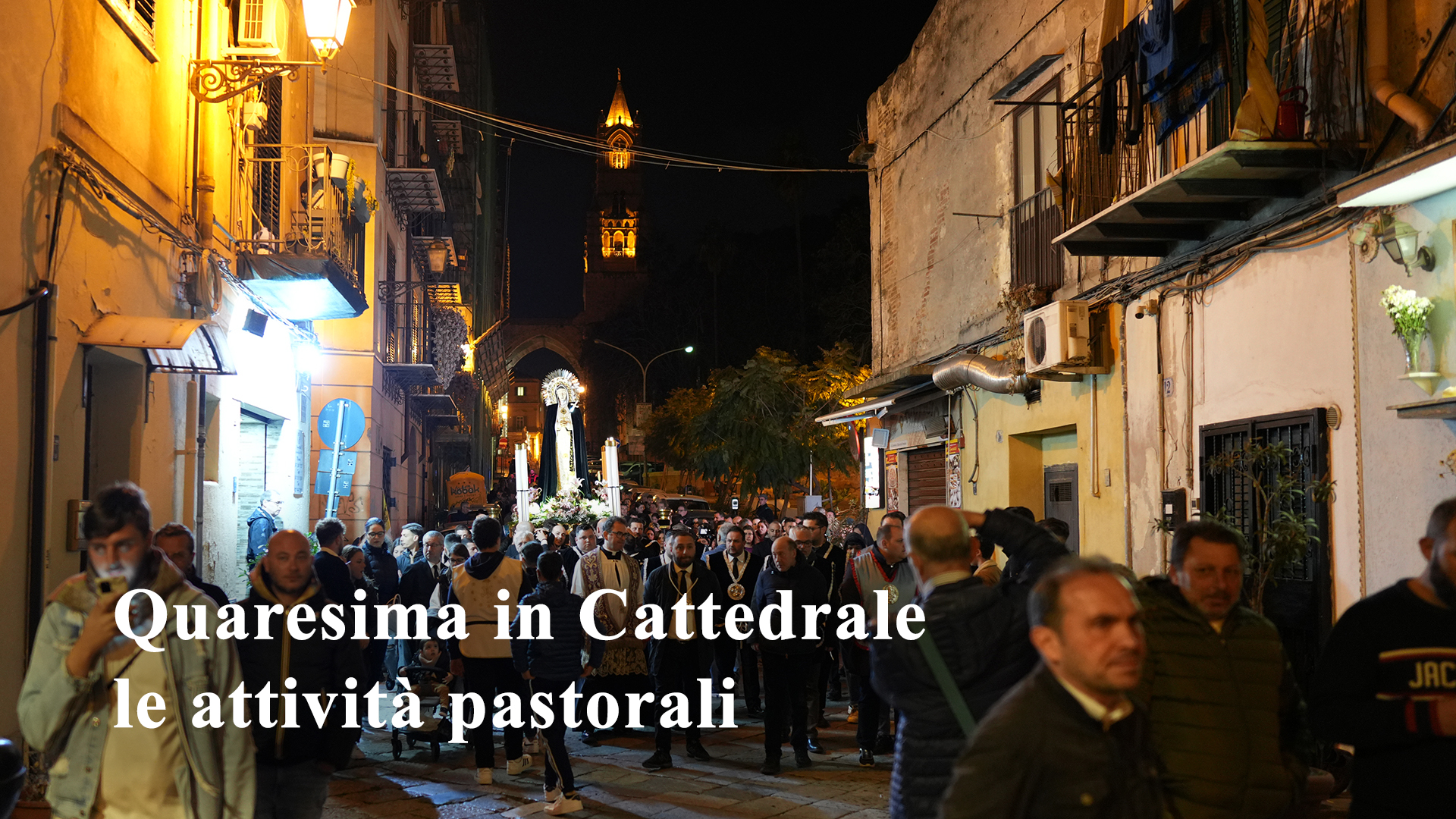Lenten journey
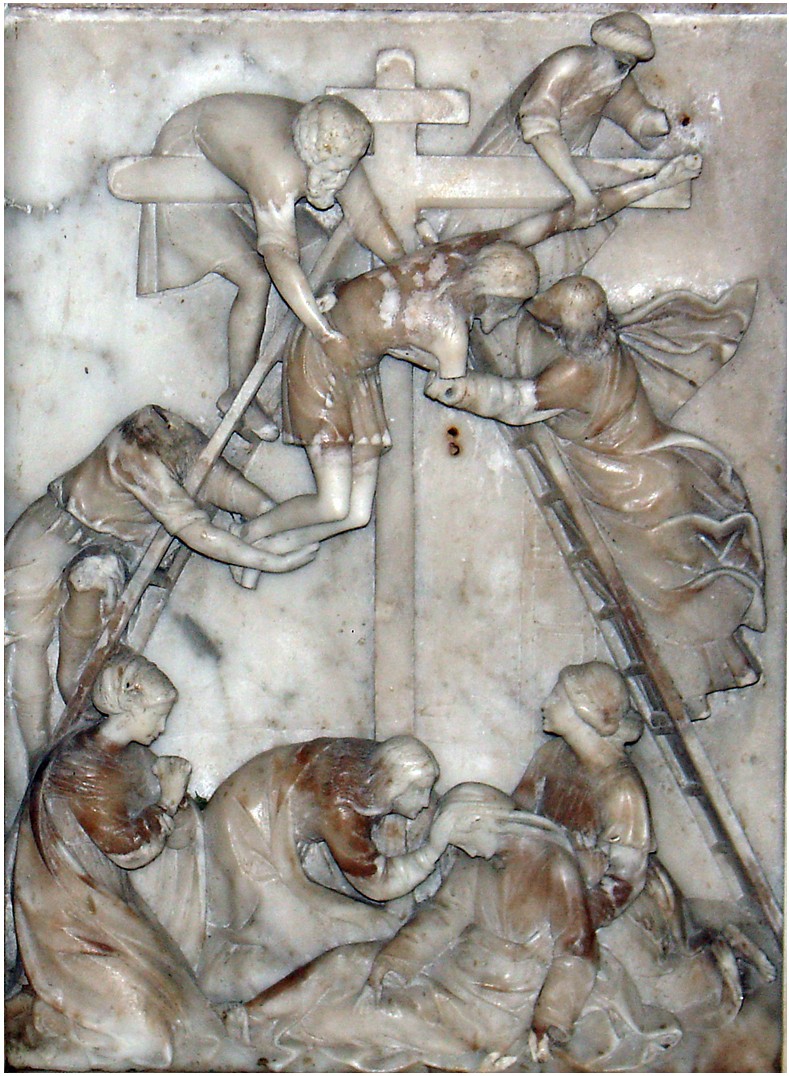
May the Virgin Mary, Mother of Hope, intercede for us and accompany us on our Lenten journey. The Church, mother and teacher, invites us to prepare our hearts and open ourselves to the grace of God to be able to celebrate with great joy the paschal triumph of Christ, the Lord, over sin and death. (From the Message for Lent 2025 by Pope Francis) With the hope of preparing ourselves well, as a Community, to celebrate the Paschal Mystery of Christ crucified and risen, I wish everyone a Happy and Holy Easter! I propose for your reflection the Message for Lent of Pope Francis and that of our Archbishop, Mons. Corrado Lorefice.
Don Filippo Sarullo Parish Priest.

Dear brothers and sisters!
With the penitential sign of ashes on our heads, we begin the annual pilgrimage of Holy Lent, in faith and hope. The Church, mother and teacher, invites us to prepare our hearts and to open ourselves to the grace of God to be able to celebrate with great joy the paschal triumph of Christ, the Lord, over sin and death, as Saint Paul exclaimed: "Death has been swallowed up in victory. O death, where is your victory? O death, where is your sting?" (1 Cor 15:54-55). In fact, Jesus Christ, dead and risen, is the center of our faith and is the guarantor of our hope in the great promise of the Father, already realized in Him, his beloved Son: eternal life (cf. Jn 10:28; 17:3)[1].
In this Lent, enriched by the grace of the Jubilee Year, I would like to offer you some reflections on what it means to walk together in hope, and to discover the calls to conversion that God’s mercy addresses to all of us, as individuals and as communities.
First of all, to walk. The motto of the Jubilee “Pilgrims of Hope” brings to mind the long journey of the people of Israel towards the promised land, narrated in the book of Exodus: the difficult journey from slavery to freedom, desired and guided by the Lord, who loves his people and is always faithful to them. And we cannot remember the biblical exodus without thinking of so many brothers and sisters who today flee from situations of poverty and violence and go in search of a better life for themselves and their loved ones. Here arises a first call to conversion, because we are all pilgrims in life, but each of us can ask ourselves: how do I allow myself to be challenged by this condition? Am I truly on a journey or rather paralyzed, static, with fear and a lack of hope, or settled in my comfort zone? Am I looking for ways of liberation from situations of sin and lack of dignity? It would be a good Lenten exercise to confront the concrete reality of some migrant or pilgrim and let them involve us, so as to discover what God asks of us to be better travellers towards the house of the Father. This is a good “examination” for the traveller.
Secondly, let us make this journey together. Walking together, being synodal, this is the vocation of the Church[2]. Christians are called to make a journey together, never as solitary travellers. The Holy Spirit pushes us to go out of ourselves to go towards God and towards our brothers and sisters, and never to close ourselves in[3]. Walking together means being weavers of unity, starting from the common dignity of children of God (cf. Gal 3:26-28); it means proceeding side by side, without trampling on or overwhelming the other, without harbouring envy or hypocrisy, without allowing anyone to be left behind or feel excluded. Let us go in the same direction, toward the same goal, listening to one another with love and patience.
This Lent, God asks us to verify whether in our lives, in our families, in the places where we work, in parish or religious communities, we are capable of walking with others, of listening, of overcoming the temptation to retreat into our self-referentiality and to attend only to our own needs. Let us ask ourselves before the Lord whether we are able to work together as bishops, priests, consecrated persons and lay people, in the service of the Kingdom of God; whether we have an attitude of welcome, with concrete gestures, towards those who come to us and those who are far away; whether we make people feel part of the community or whether we keep them on the margins[4]. This is a second appeal: conversion to synodality.
Thirdly, let us make this journey together in the hope of a promise. May the Hope that does not disappoint (cf. Rom 5:5), the central message of the Jubilee[5], be for us the horizon of the Lenten journey towards the Paschal victory. As Pope Benedict XVI taught us in the Encyclical Spe Salvi, "human beings need unconditional love. They need that certainty which makes them say: 'Neither death nor life, nor angels nor principalities, nor things present nor things to come, nor powers, nor height nor depth, nor any other creature will be able to separate us from the love of God, which is in Christ Jesus our Lord' (Rom 8:38-39)"[6]. Jesus, our love and our hope, is risen[7] and lives and reigns gloriously. Death has been transformed into victory and here lies the faith and the great hope of Christians: in the resurrection of Christ!
Here is the third call to conversion: that of hope, of trust in God and in his great promise, eternal life. We must ask ourselves: do I have the conviction that God forgives my sins? Or do I behave as if I could save myself on my own? Do I aspire to salvation and invoke God's help to welcome it? Do I concretely live the hope that helps me to interpret the events of history and drives me to commit myself to justice, to fraternity, to care for our common home, ensuring that no one is left behind?
Sisters and brothers, thanks to the love of God in Jesus Christ, we are kept in the hope that does not disappoint (cf. Rom 5:5). Hope is the "anchor of the soul", sure and firm[8]. In it the Church prays that "all men may be saved" (1 Tim 2:4) and awaits being in the glory of heaven united with Christ, her spouse. This is how Saint Teresa of Jesus expressed herself: "Hope, my soul, hope. You do not know the day or the hour. Watch attentively, everything passes in a breath, although your impatience can make what is certain uncertain, and a very short time long" (Exclamations of the soul to God, 15, 3)[9].
May the Virgin Mary, Mother of Hope, intercede for us and accompany us on the Lenten journey.
Rome, Saint John Lateran, 6 February 2025, memorial of Saints Paul Miki and companions, martyrs.
FRANCESC0

Dearest,
Lent comes as an opportune time, a springboard that immerses us in the regenerating and transfiguring waters of the Lord Jesus’ Easter (see Rom 6:3-5) to be increasingly “clothed in Christ” (Gal 3:27), “life-giving spirit” (1 Cor 15:45), and to gain in Him “Easter relationships” redeemed from the desolation of solitude and death, from narcissism and the lust for power that generate and sow marginalization, fear, oppression, enmity.
This liturgical time, along its forty days, contains and releases a performing force of conversion. It involves our entire being – the body with fasting, the intelligence with prayer, the feelings with almsgiving – and re-centers it in Christ who loved us to the point of dying for us!
A gymnasium of memory – through a more prolonged listening to the Word of God contained in the Scriptures – Lent helps us to give voice to the “question of the Easter day” (Bose, Lenten Hymn) and prepares us, vigilant in waiting, to open the door to the risen Christ, the Coming One who comes to knock and to become our Guest (see Rev 3:20), and to “have a heart capable of weeping” (Bose, Lenten Hymn) when, as the other ‘strong season’ of Advent reminds us, “he comes to meet us in every man and in every age, so that we may welcome him in faith and bear witness in love to the blessed hope of his kingdom” (Preface II).
Lent asks us to keep our gaze fixed on the Christus passus et patiens, on the Christ who suffers in patience, remaining submissive and constant in good, faithful in love for God and men, even in passion and death. For this reason it becomes a time that revives and reinvigorates hope, since "God made him to be sin who knew no sin, so that in him we might become the righteousness of God" (2 Cor 5:21). On this inescapable foundation Paul announces: "Hope does not disappoint, because God's love has been poured into our hearts through the Holy Spirit who has been given to us" (Rom 5:5).
I am reminded of the motto of the Carthusian monks, Stat crux dum volvitur orbis (The Cross remains firm while the world turns), which has accompanied me - engraved in my episcopal coat of arms - for almost 10 years now. I chose it because I was called by the Apostolic Nuncio on October 6, the memorial of Saint Bruno, founder of the Order. The Carthusian symbol of the cross planted on the globe indicates the supreme stable point of reference and salvation in the midst of the changes of the world. It is the supreme sign of God’s love in Christ for us men: “For God so loved the world that he gave his only Son” (Jn 3:16). It is, therefore, an emblem of hope.
Last year in Rome, in the church of San Marcello al Corso, I read a phrase that had been placed for the exhibition of the Christ of Saint John of the Cross, also known as the Christ of Port Lligat, painted by Salvador Dalí during his spiritual rebirth: “If you want a word of hope, fix your gaze on Him alone. There you will find more than you desire.” In preparation for the Jubilee of 2025, Pilgrims of Hope, the expression was freely taken from the work of the great Spanish saint Ascent of Mount Carmel: “Look carefully at him and you will know that in him I have done and said much more than you ask of me. If you want me to answer you with some words of consolation, look at my Son, obedient to me and submissive and suffering for my love, and you will have many answers» (II, 22, 5-6). It helped me to fix my gaze on the Christ painted by the brilliant master of Port Lligat who was inspired by the drawing-relic of the Crucified Christ traced between 1572-1575 by the hand of San Juan de la Cruz on a small piece of paper, after having had a vision in prayer. Dalì paints – as the curator of the event Don Alessio Geretti explains in the catalogue – Christ seen from above, as the Father sees him. Those who contemplate the painting do not see the face of the Crucified. The cross is a heavy solid suspended in the dark void that dominates the landscape-world. Christ is not nailed to the wood, nor is there a trace of blood. For Dalì, Jesus “chooses” to be crucified consciously and freely, and above all for love. His sacrifice does not need to be restrained by an instrument of torture. His suffering is all in the weight that pulls and drags him, that tenses every muscle of his body.
Christ hangs over the world in the darkness, while he offers himself and is offered by the Father in Love. This tremendous and fascinating Trinitarian effluvium of love ensures that the world reaches a port of salvation as seen below, in the view of Port Lligat – the place of Dalì's creativity – a figure of the entire world that recognizes itself in this place. The landscape is in fact a quiet bay surrounded by soft colors and suffused with light. A boat is on the beach with some figures of fishermen mending their nets as in the 'first call' of the Lake of Galilee.
They are figures unaware of what is happening – in the thick darkness above – to the Crucified Love, but nevertheless immersed in grace, in the light of hope, in the peaceful and pacifying harmony of the landscape that frames a clear sky and a calm blue sea. That light and that harmony of the lower part of the canvas is the world as Christ sees it, a world finally no longer overwhelmed by heavy darkness but illuminated and serene, almost an absolute inlet where a light breeze blows as if of a new creation. It is also that Lake Tiberias from where the mission of Jesus of Nazareth began by calling the first disciples, emblem of all the poor; the place of the first hour, of the first love and, above all, of the final appointment after the resurrection (see Mt 28:10). Nothing is written on the scroll of the cross. It is the page on which all those who fix their gaze on Jesus can and must write the story redeemed from darkness, rewritten by the love that he pours into hearts, so that the world may be as, with patience and perseverance, it continues to see him.
"Christ draws us to the cross, his arms stretched out over the world, let us go to the nuptial encounter, this is the time of grace" (Bose, Lenten Hymn): with these words that the liturgy in Lent puts on the lips of our hearts, I turn to my beloved diocesan community.
Let us fix our gaze on Christ Crucified. I, you – Dearest, Dearest – are not the fruit of nothingness thrown into the chaos of the world by chance. We are loved, and each and every one of us has loved ones beside us, like us. Contemplating in this liturgical time Him who has loved us with a greater love (see John 15:13), we rediscover and savor once again the beauty of Christian brotherhood, of our belonging to the Church; the beauty of belonging to the one human family, beyond every geographical, cultural or religious boundary! Even when everything around us and in the world seems to speak of the cooling of love and the advancement of enmity and indifference, we are all immersed in the immense love of God, who continually regenerates us, hosts us and makes us fruitful in hope and charity.
As the author of the letter to the Hebrews writes, "faith is the substance of things hoped for, the conviction of things not seen" (Heb 11:1). Thus hope becomes "a cognitive instrument of extraordinary foresight, acuity, lucidity" (C. M. Martini). It is an uncontrollable and unshakeable force of life and relationship. Not because we are strong. In fact, we too know our limits, fragility, fears. Every day your bishop also experiences his limits, his fragility, his fears, as he measures himself with a task so complex and unequal to his abilities and strengths!
Dearest, let us turn our gaze to crucified Love. Let us return to Him "with all our heart, for he is merciful and gracious, slow to anger, and abounding in love" (Joel 2:12-13). Let us place our faith only in Him.
"Go into your room, close the door, and pray to your Father, who is in secret" (Mt 6:6), announces the Gospel of Ash Wednesday. Let us not spare time for the Lord. Let us refrain from wasting time on things that hurt us humanly and that confuse us spiritually. Each of us in the secret of his conscience knows how much energy he wastes every day on futile and alienating things. Let us spend more time with the Lord Jesus, let us remain longer in Him. We will see hope welling up in us and hope will activate the transfiguring force of charity which, as the apostle Paul reminds us, "is patient, charity is kind; charity is not envious, it does not boast, it is not puffed up, it is not disrespectful, it does not seek its own interests, it is not irritable, it does not take into account the evil received, it does not rejoice in injustice, but rejoices in the truth. It bears all things, believes all things, hopes all things, endures all things. Charity never ends" (1 Cor 13:4-8). This world of ours needs messianic charity.
"Mother of hope, watch over our path, guide our steps towards your Son" (C. Bizzetti).
+ Corrado, Archbishop - Archbishop
March 5 ASH WEDNESDAY
- 7:30 AM Mass and imposition of the Ashes
- 4:30 PM Liturgy of imposition of the Ashes for the children of the Catechism
- 6:00 PM Mass presided over by the Archbishop and imposition of the Ashes
7 - 14 - 21 - 28 MARCH AND 4 - 11 APRIL FRIDAY OF LENT
5:15 PM Via Crucis; 6:00 p.m. Mass
Sunday, March 9
11:00 a.m. Family group retreat - parish premises in Piazza Vittoria 10
Tuesday, March 25, 9:00 p.m.
Eucharistic adoration in the Cathedral
Friday, March 28, 9:00 p.m.
Penitential liturgy in the Cathedral presided over by the Archbishop
Monday, March 31, 9:00 p.m.
Inter-parish Via Matris (Cathedral, St. Hippolytus and St. Stanislaus). Itinerary from the Cathedral and conclusion in the church of Ss. Cosma and Damiano.
Tuesday 1, Wednesday 2 and Thursday 3 April at 9:00 pm
Spiritual exercises for the pastoral area “Giving reason for the hope that is in us”, at the Parish of S. Giuseppe Cafasso, held by Don Luca Crapanzano
Friday 4 April at 9:00 pm
Via Crucis of the pastoral areas of the 1st and 2nd Vicariate. Itinerary: from the Parish of S. Anna to the Cathedral.
Thursday 10 April at 9:00 pm in the Cathedral
Reflection in preparation for Easter: SPES NON CONFUNDIT. Anchored to hope: nn. 18-23 of the Bull of Indiction of the Jubilee held by Prof. Paolo Curtaz
Friday 11 April at 9:00 pm
Via Crucis city
Tuesday 15 April at 4:30 pm
Via Crucis for the children of the Catechism
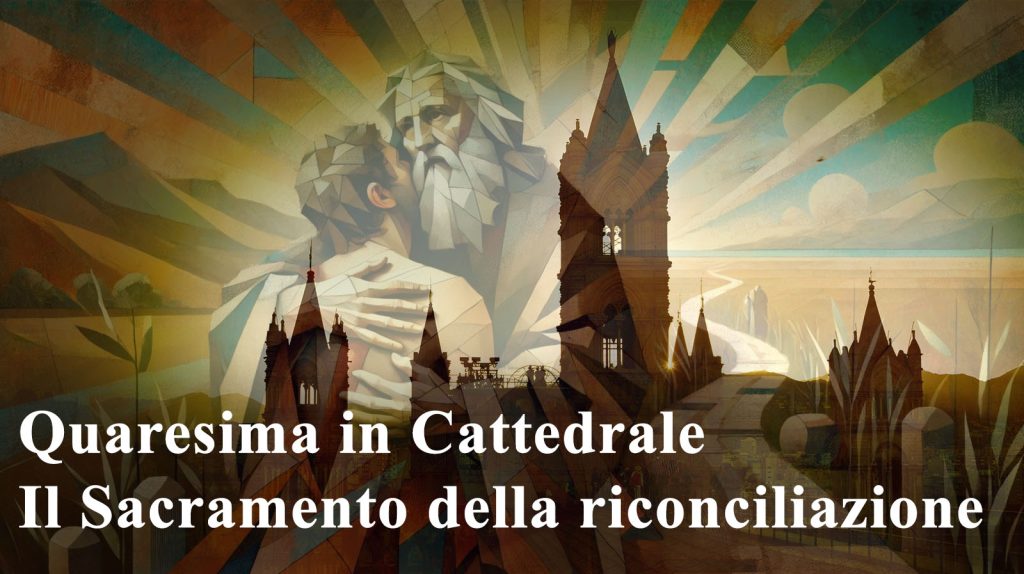 I hope that the most beautiful fruit of these formative meetings will be a good confession for an adequate preparation for Easter, as Pope Francis urges us to do in his homily for Ash Wednesday 2020: I hope that the most beautiful fruit of these formative meetings will be a good confession for an adequate preparation for Easter, as Pope Francis urges us to do in his homily for Ash Wednesday 2020:
I hope that the most beautiful fruit of these formative meetings will be a good confession for an adequate preparation for Easter, as Pope Francis urges us to do in his homily for Ash Wednesday 2020: I hope that the most beautiful fruit of these formative meetings will be a good confession for an adequate preparation for Easter, as Pope Francis urges us to do in his homily for Ash Wednesday 2020:
"Lent is a time of healing. What should we do then? On the journey towards Easter we can take two steps: the first, from dust to life, from our fragile humanity to the humanity of Jesus, who heals us. We can stand before the Crucifix, stay there, look and repeat: "Jesus, you love me, transform me... Jesus, you love me, transform me...". And after having welcomed his love, after having cried in front of this love, the second step, so as not to fall back from life to dust. We go to receive God's forgiveness, in Confession, because there the fire of God's love consumes the ashes of our sin. The Father's embrace in Confession renews us inside, cleanses our hearts. Let us allow ourselves to be reconciled to live as beloved children, as forgiven sinners, as healed sick people, as accompanied wayfarers. Let us allow ourselves to be loved in order to love. Let us allow ourselves to rise again, to walk towards the goal, Easter. We will have the joy of discovering that God resurrects us from our ashes".
REFLECTION ON THE ACT OF CONTRIBUTION BY POPE FRANCIS
(From the speech of Pope Francis to the participants in the course on the Internal Forum promoted by the Apostolic Penitentiary, 8 March 2024).
[…] I would like to propose that we reflect together on a simple and rich prayer, which belongs to the heritage of the holy faithful People of God and which we recite during the rite of Reconciliation: the Act of Contrition.
Despite the somewhat ancient language, which could also be misunderstood in some of its expressions, this prayer retains all its validity, both pastoral and theological. After all, its author is the great Saint Alphonsus Maria de’ Liguori, a master of moral theology, a pastor close to the people and a man of great balance, far from both rigorism and laxity.
I will focus on three attitudes expressed in the Act of Contrition and which I think can help us meditate on our relationship with God’s mercy: repentance before God, trust in Him and the intention not to fall again.
First: repentance. It is not the fruit of self-analysis or a psychic sense of guilt, but it all flows from the awareness of our misery in the face of God's infinite love, his limitless mercy. It is this experience in fact that moves our soul to ask him for forgiveness, trusting in his paternity, as the prayer says: "My God, I repent and I grieve, with all my heart, for my sins", and further on it adds: "because I have offended You, infinitely good". In reality, in the person, the sense of sin is proportional precisely to the perception of God's infinite love: the more we feel his tenderness, the more we desire to be in full communion with Him and the more evident the ugliness of evil in our life becomes. And it is precisely this awareness, described as "repentance" and "pain", that pushes us to reflect on ourselves and our actions and to convert. Let us remember that God never tires of forgiving us, and let us never tire of asking him for forgiveness!
Second attitude: trust. In the Act of Contrition, God is described as "infinitely good and worthy of being loved above all things". It is beautiful to hear, on the lips of a penitent, the recognition of the infinite goodness of God and of the primacy, in one's life, of love for Him. Loving "above all things", in fact means putting God at the center of everything, as a light on the path and the foundation of every order of values, entrusting everything to him. And it is a primacy, this, that animates every other love: for men and for creation, because those who love God love their brothers (see 1 John 4:19-21) and seek their good, always, in justice and peace.
Third aspect: the purpose. It expresses the penitent’s will never to fall again into the sin committed (see Catechism of the Catholic Church, 1451), and allows the important passage from attrition to contrition, from imperfect to perfect sorrow (see ibid., 1452-1453). We express this attitude by saying: “I resolve, with your holy help, never to offend you again.” These words express a resolution, not a promise. In fact, none of us can promise God never to sin again, and what is required to receive forgiveness is not a guarantee of impeccability, but an actual resolution, made with right intention at the moment of confession. Furthermore, it is a commitment that we always assume with humility, as the words “with your holy help” emphasize. Saint John Mary Vianney, the Curé of Ars, used to repeat that “God forgives us even if he knows that we will sin again.” And besides, without his grace, no conversion would be possible, against every temptation of old or new Pelagianism.
Finally, I would like to draw your attention to the beautiful conclusion of the prayer: “Lord, mercy, forgive me”. Here the terms “Lord” and “mercy” appear as synonyms, and this is decisive! God is mercy (see 1 John 4:8), mercy is his name, his face. It does us good to remember this, always: in every act of mercy, in every act of love, the face of God shines through.
CONFESSORS IN THE CATHEDRAL DURING THE WEEKS OF LENT
Monday: 9:00 - 11:00 Mons. Gino Lo Galbo
Tuesday: 8:15 - 10:15 Mons. Francesco Conigliaro
Wednesday: 8:00 - 11:00 Mons. Pietro Passantino
Thursday: 9:00 - 11:00 Mons. Giovanni Oliva
Friday: 8:15 - 10:15 Mons. Francesco Conigliaro
Saturday: 8:15 - 10:15 Mons. Francesco Conigliaro
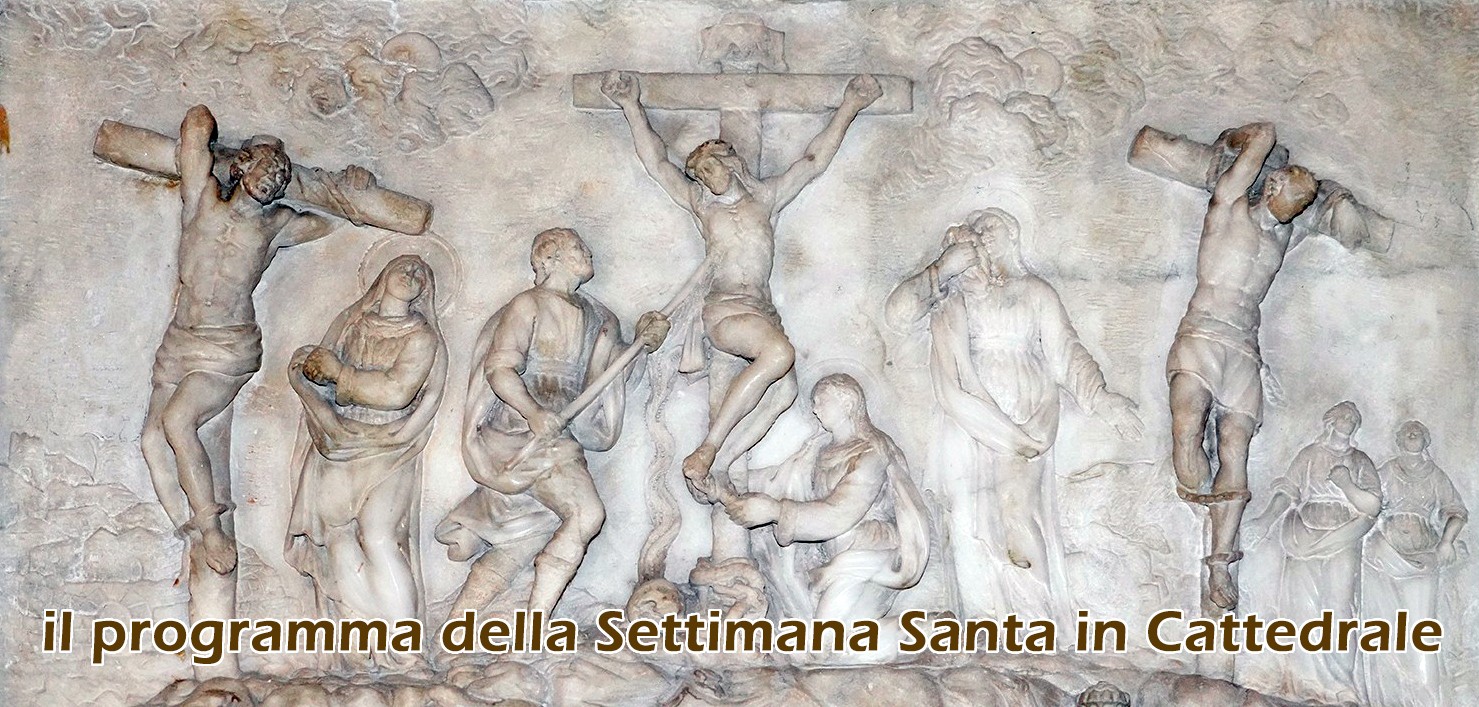
PALM SUNDAY - April 13
8:45 - 9:45 - 18:00 Holy Masses
11:00 Pontifical Mass presided over by the Archbishop
MONDAY, TUESDAY and HOLY WEDNESDAY - April 14 - 15 - 16
7:30 - 18:00 Holy Masses - Confession is possible during the day
HOLY THURSDAY - April 17
9:30 Chrism Mass;
6:00 PM Mass of the Lord's Supper
10:30 PM Adoration at the Altar of Repose, led by students of the Archbishop's Seminary - Confession is possible in the afternoon
GOOD FRIDAY - Passion of the Lord - April 18
8:00 AM Office of Readings and Lauds - The Archbishop presides
6:00 PM Liturgy of the Passion - The Archbishop presides - Confession is possible during the day
HOLY SATURDAY - April 19
8:00 AM Office of Readings and Lauds - The Archbishop presides
10:30 PM Solemn Easter Vigil presided over by the Archbishop - Confession is possible during the day
RESURRECTION SUNDAY EASTER OF THE LORD APRIL 20
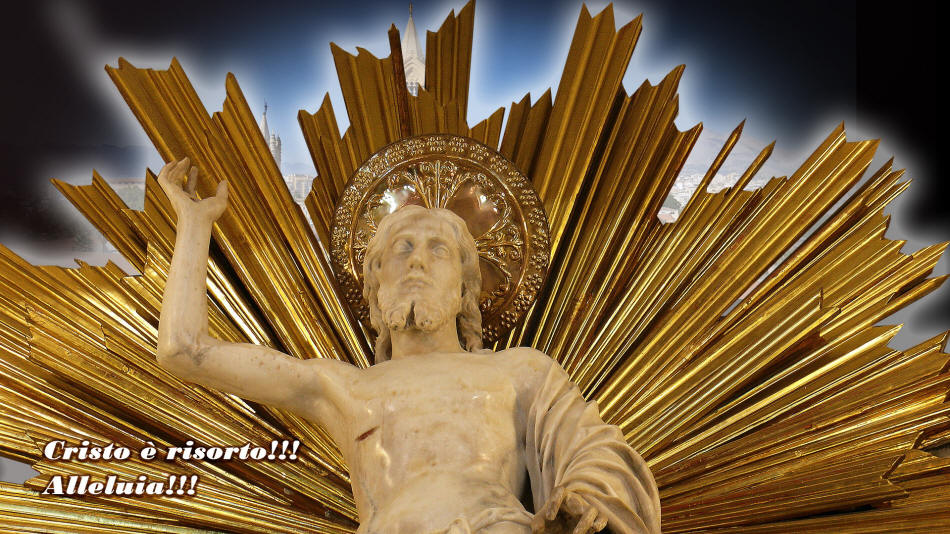
- 8.45am - 9.45am - 6.00pm Holy Mass
- 11.00am Solemn Pontifical Mass presided over by the Archbishop
With this hope that the Risen Lord gives us, I wish everyone a Happy and Holy Easter!
(Don Filippo Sarullo, Parish Priest)

